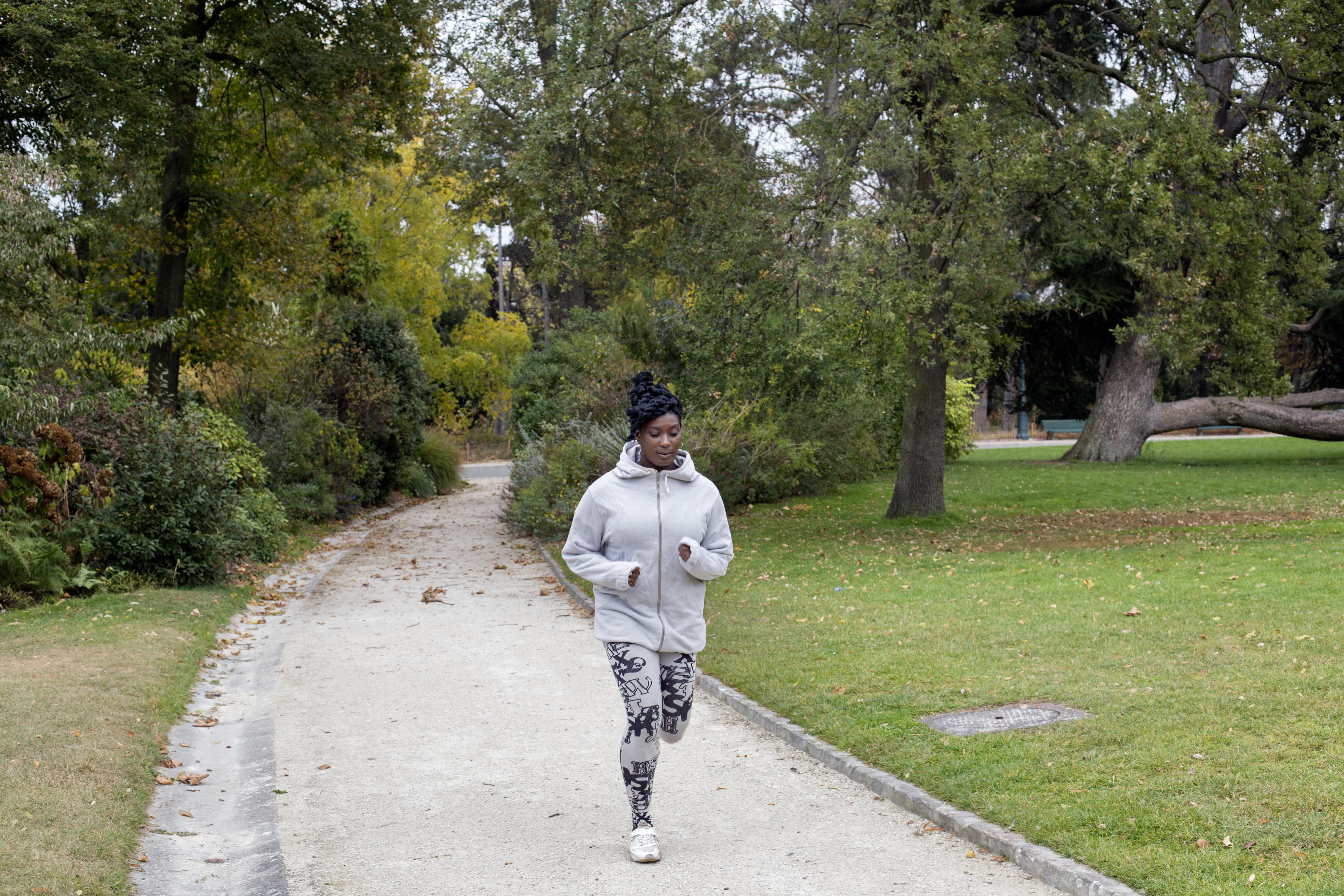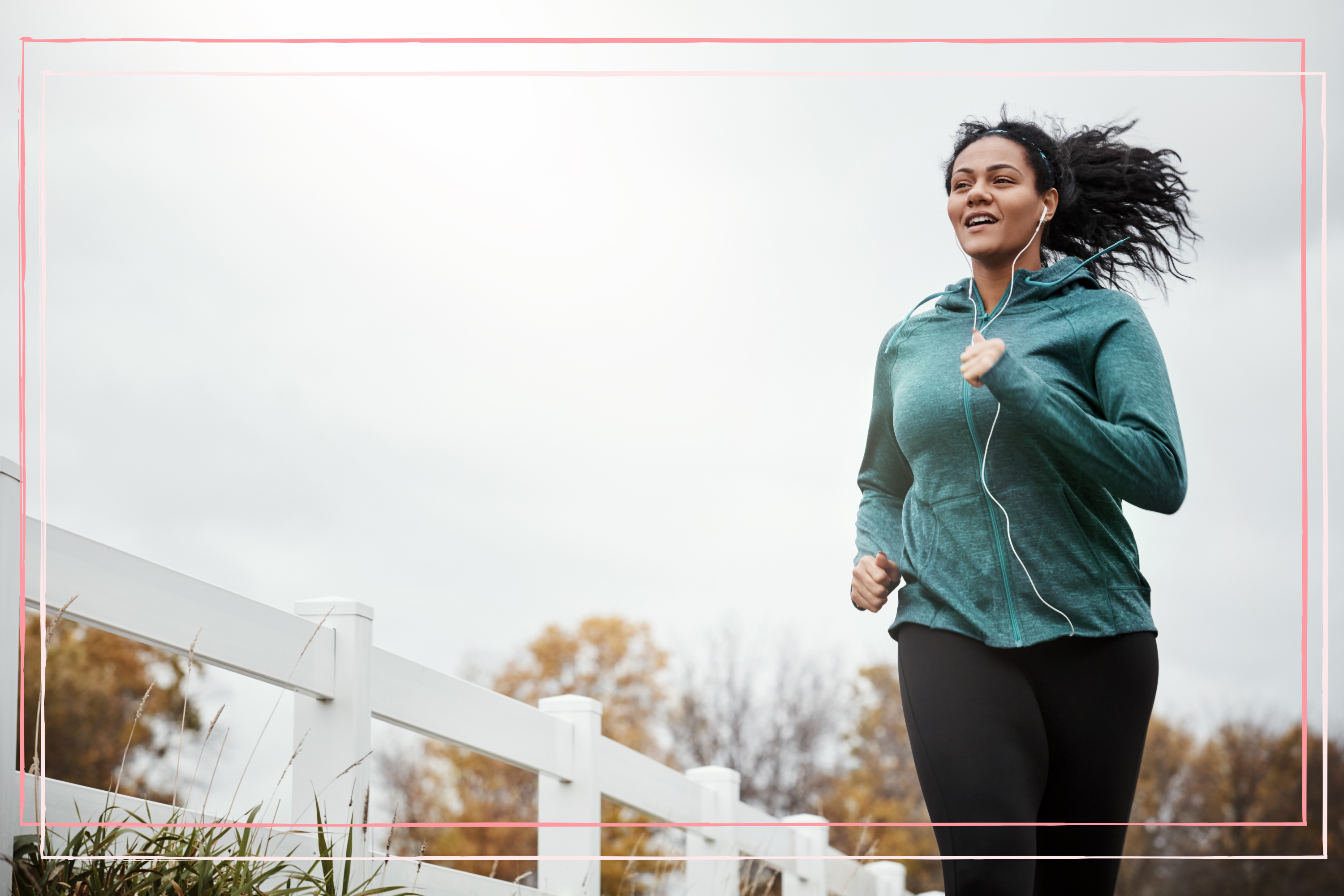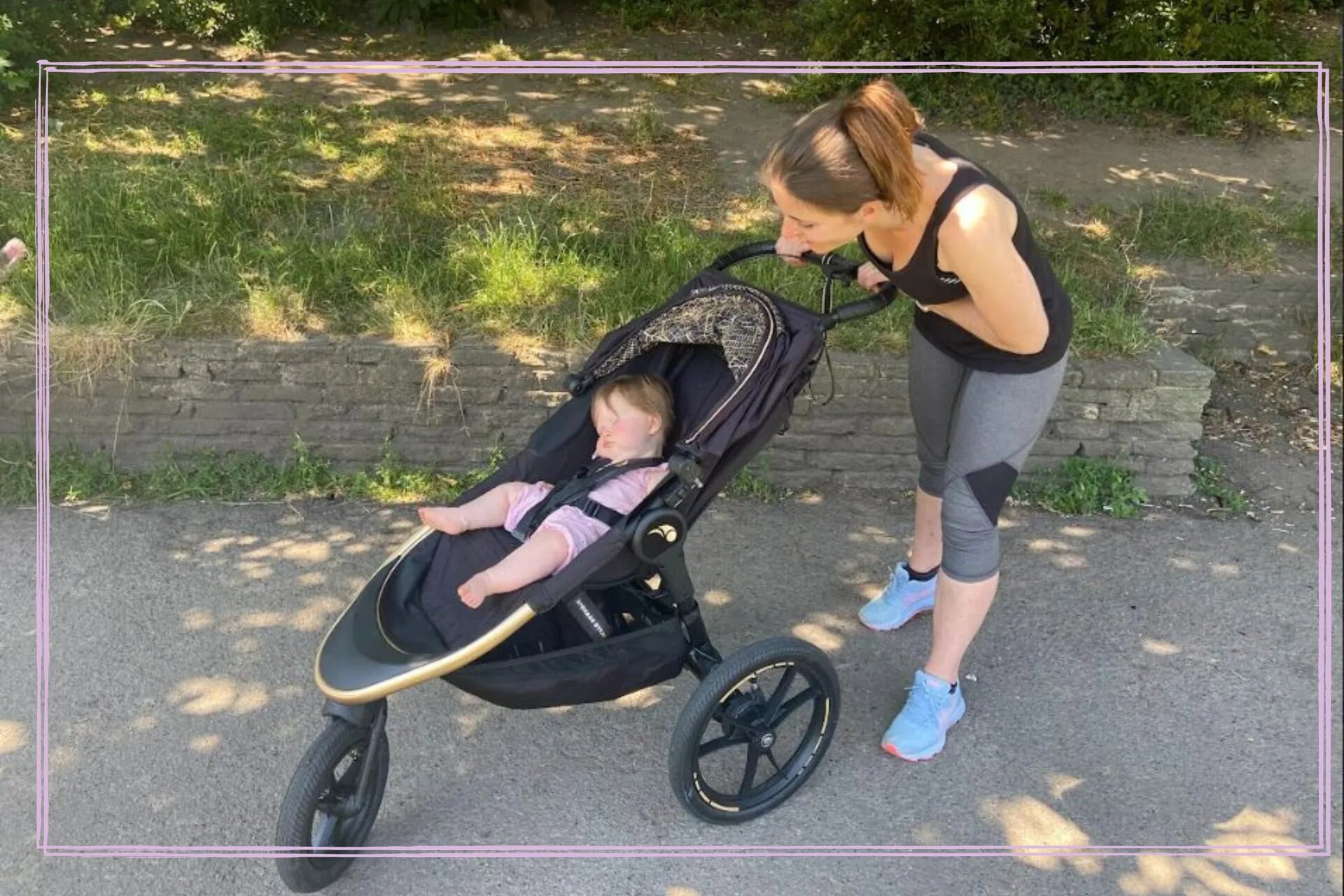When can you go running after having a baby?
We cut through the noise, with help from the experts, and answer all of your burning questions on postpartum running


Making the return back to running after giving birth might have you questioning, am I ready?
Postnatal exercise should be planned carefully, especially when considering high-impact workouts, such as high intensity interval training (HIIT) or running. First, there are changes to your body that occur after giving birth, so it’s recommended waiting for your six-week check-up before attempting any kind of exercise again.
But with running, you need a gradual and graded approach, and the NHS advice on returning to running after having a baby recommends waiting at least 12 weeks after giving birth. Having the time to exercise and give yourself a break is the ultimate self-care when you become a mum, but if you don't have that option, running with a pram could be more suited to your lifestyle, and our parent tester recommends the Baby Jogger Summit X3 pushchair to help parents stay active once their baby is here.
We've consulted with the experts on postpartum running and pelvic floor health to ensure you're fit and well to start running after having a baby.
Running after having a baby guidelines
Running is a high-impact form of physical activity, so a gradual and graded approach is recommended. in its return. Running requires lower body strength and pelvic floor control, so it's advised to follow NHS postnatal return to fitness plan.
- Guidelines after a vaginal birth: If you’ve had a healthy pregnancy and vaginal delivery, most people should be able to build up to returning to running after 12 weeks, ensuring you've answered 'yes' to the test questions in the NHS fitness plan.
- Guidelines after a c-section: The same advice applies of waiting after 12 weeks before you start running again, but some people might need longer, so be sure to consult your GP before doing any postnatal exercise if you've undergone a c-section or experienced a complex pregnancy.
What’s the difference between a vaginal and c-section birth for recovery?
After a vaginal birth, returning to running is typically faster (but it's not recommended to start this high-impact exercise before 12 weeks), while women who have had a c-section may require more time to recover and heal properly due to the procedure.
Whether you've had a vaginal birth or c-section, your pelvic floor will have been affected, meaning you may leak when coughing or sneezing or experience reduced sensation in your vagina. “The pregnant body goes through changes that have a dramatic impact on strength, endurance, posture and the body’s ability to safely absorb the ground reaction forces that are necessary for a safe return to running,” explains doctor of physiotherapy Heather Jeffcoat. Returning to running, or any impact sport, should not occur until at least 12 weeks postpartum, and only after an initial series of low impact exercises have been completed leading up to that, she adds.
GoodtoKnow Newsletter
Parenting advice, hot topics, best buys and family finance tips delivered straight to your inbox.
Understanding your body postpartum
New mums should be aware of the importance of understanding their bodies postpartum, including changes, recovery and seeking support for physical and emotional wellbeing.
Hormonal changes
Your body will go through many changes after birth and new mothers should expect hormonal shifts after they give birth. Oestrogen levels typically resume six to 10 weeks post-delivery but may be delayed during breastfeeding. In some cases, the return to normal might take a few months after breastfeeding has stopped. Heather, who is also on the Advisory Board of the International Pelvic Pain Society, tells us: “It's essential to consider the intensity of exercise when returning to running [while] maintaining breastfeeding. Low to moderate intensity exercise is recommended, as high-intensity exercise can increase lactate levels in milk, leading to sour milk. If mums are engaging in high-intensity exercise, breastfeed or pump right before to minimise the increase of lactate that occurs in the milk supply with high-intensity workouts.”
Joint laxity
Relaxin is a hormone that helps relax muscles and ligaments, particularly during pregnancy, allowing the body to adapt to changes and prepare for childbirth. “We should be considering that relaxin is still in the woman's body after delivery and that she is still in a period of time where her joints are more susceptible to injury,” explains Heather. Therefore, a thoughtful return to running program should be implemented in order to prepare her for a safe transition at 12 weeks, she adds.
Heather highlights a 2019 study that compared the biomechanical changes of runners pre-pregnancy (or at least less than 14 weeks gestation) and postpartum. She explains: “At six weeks, postpartum subjects had decreased trunk and pelvic rotation, and running speed, with increased step width and stance time, compared to pre-pregnancy measurements. They also found a compensatory pattern of decreased motion in the hips with increased motion at the knee.” These changes likely occur because there’s a natural decrease in stability, leading to shorter and smaller movements.
Pelvic floor considerations
Your pelvic floor muscles change during pregnancy to support the growth and development of your baby. Then, the NHS states that your pelvic floor muscles stretch during labour causing them to weaken. While your GP might inspect things like blood pressure and stitches (if you had a c-section), postpartum trainer Margaret Barschow recommends seeking a pelvic floor physical therapist for a thorough assessment. The founder of Margo’s Low Impact Health Club told GoodtoKnow: “Pelvic floor physical therapists can evaluate the strength and coordination of your pelvic floor muscles. This is extremely pertinent to running as it’s a high-impact exercise. This means with a weak pelvic floor, mums can be in danger of weakening the muscles further or, at its worst, prolapse.” Margo recommends the exercises below to strengthen your pelvic floor.
Exercises for the pelvic floor
- Pelvic tilts: Lie on your back with knees bent and feet flat on the floor. Inhale and as you exhale, tilt your pelvis upward, engaging your core. Hold for a few seconds, then release. Repeat for 15-20 reps.
- Bridge exercise: Lie on your back with knees bent and feet hip-width apart. Lift your hips toward the ceiling, engaging your glutes and core. Hold at the top for a few seconds, then lower back down. Repeat for 15-20 reps.
- Side-lying leg raises: Lie on one side with your bottom leg bent for support. Lift the top leg while keeping your toes pointed forward. Lower the leg back down without letting it touch the bottom leg. Repeat for 15-20 reps on each side.
- Bird dog: Start on your hands and knees in a tabletop position. Extend your right arm forward and left leg backward simultaneously. Engage your core and hold for a moment before returning to the starting position. Repeat with the opposite arm and leg. Continue alternating for 15-20 reps on each side.
- Deep squats: Stand with feet shoulder-width apart. Lower into a deep squat, keeping your chest up and weight in your heels. Engage your core and glutes as you return to the starting position. Repeat for 15-20 reps.
Start slowly
After giving birth, women need to ease into exercise to help prevent muscle strains and support gradual recovery.
Begin with walking
When working towards a running regimen postpartum, it’s important to start slowly and listen to your body. Margo advises: “Begin with walking – five-minute increments can even be done with the baby in a pram.” Pelvic tilts, heel slides and glute bridges are also good exercises as your body adjusts and strengthens. Think gentle movement, instead of light workout, Margo adds.
Gradual progression
For some women, even walking could be a challenge after giving birth. By beginning with short walks of five minutes as Margo suggests, you can then progress as tolerated. “Gradually reintroduce running by starting with short bouts of jogging interspersed with walking. Progressively increase the running time and intensity as your body allows, and avoid pushing yourself too hard, too soon.”

Black woman in the park
24-week postpartum running programme
Assuming you have clearance from your GP to start running, following a postpartum running programme is a great way to track your progress.
- Weeks 1-6: Recovery phase: Focus on gentle activities like walking and gradually increase duration as comfort allows. The pelvic floor exercises and gentle stretches above will be beneficial.
- Weeks 6-10: Low-intensity running: Start with short, light jogs. Pay attention to your body, ensuring there's no discomfort. Integrate pelvic floor exercises and core-strengthening moves.
- Weeks 10-16: Building stamina: Gradually increase running time and intensity. Include pelvic floor exercises and start incorporating bodyweight exercises for overall strength.
- Weeks 16-20: Moderate intensity: Continue progressing your running routine. Include intervals for variety. Strengthen core and lower body with exercises like squats and lunges.
- Weeks 20-24: Increased challenge: Introduce longer runs and more challenging workouts. Include cross-training for balanced fitness. Pay attention to any signs of fatigue or discomfort.
- Weeks 24 and beyond: Full return to running: Assuming you feel comfortable and have no complications, resume a regular running routine. Keep incorporating strength training and listen to your body for optimal recovery. Remember, individual recovery varies, so adapt the program based on your comfort and postpartum experience.
Listening to your body
Rest and recovery is paramount before returning to running, so when something doesn’t feel quite right, or you’re in pain, you should stop what you’re doing and go and get it checked out. Heather, who is also the founder of Femina Physical Therapy, says: “Look for signs of pelvic floor dysfunction, which include bowel or bladder incontinence (accidental leakage), involuntary passing gas with activities (including coughing, sneezing or laughing), painful bowel movements or urination (not related to an infection), painful intercourse (or tampon use) and/or a pressure and/or heaviness feeling in your pelvis, vagina or rectum, which could be a sign of pelvic organ prolapse.”
Stay hydrated
Be sure to stay properly hydrated, start slowly and do not ramp up the intensity of your runs too quickly. NHS guidelines say that this is will ensure you continue to have a satisfactory supply of milk but the quality and composition of your breast milk will not be affected by the exercise. You don’t need to follow a specific way of eating if you’re breastfeeding, just a healthy, balanced diet that includes five portions of fruit and vegetables a day, plenty of fibre-rich foods, such as wholemeal bread and pasta, as well as beans, fish, eggs and lean meat for protein.
When it comes to hydration, the NHS recommends drinking plenty of fluids when you’re breastfeeding – water, low-fat milks, low-sugar or sugar-free drinks all count. Some research has found that women can lose up to five percent of their bone mass while breastfeeding as mothers experience an increased demand for calcium to produce breast milk, which can affect bone density, so calcium-rich foods, such as milk, cheese and yoghurt are good sources.
We spoke to the following experts

Dr. Heather Jeffcoat is an orthopaedic and pelvic health physical therapist in Los Angeles and the owner of Fusion Wellness & Femina Physical Therapy. She is passionate about patient outreach and making sure her patients are treated as a whole person, not just a ‘pelvic’ patient. Her drive to educate and create change in the field of Pelvic Health is evident in her volunteer pursuits as well. She is the the current President of the Academy of Pelvic Health Physical Therapy and on the Advisory Board of the International Pelvic Pain Society. She founded a non-profit, The Origin Fund, that allows low-income individuals access to free, high quality pelvic floor physical therapy. In order to increase accessibility to care, she also wrote a book, Sex Without Pain: A Self-Treatment Guide to the Sex Life You Deserve, for women with vaginismus, vulvodynia, endometriosis and chronic pelvic pain.

Margaret Barschow is a passionate and accomplished professional in the field of fitness and wellness, dedicated to promoting low-impact health and fitness. As the founder and owner of MARGO'S Low-Impact Health Club, Margaret has established herself as an authority in the industry, and has a large clientele of postpartum women, with all four of her classes emphasising the importance of pelvic floor conditioning, core rehabilitation and healing diastasis recti. She has extensive experience of over a decade in teaching which has allowed her to refine her skills and develop innovative programmes tailored to various needs and fitness levels. Her unique approach facilitates a release of tension and restores balance through the body while building muscle and tone, ultimately improving overall wellbeing.
Continue reading

From building healthy family relationships to self-care tips for mums and parenting trends - Daniella also covers postnatal workouts and exercises for kids. After gaining a Print Journalism BA Hons degree and NCTJ Diploma in Journalism at Nottingham Trent University, Daniella started writing for Health & Wellbeing and co-hosted the Walk to Wellbeing podcast. She has also written for Stylist, Natural Health, The Sun UK and Fit & Well. In her free time, Daniella loves to travel, try out new fitness classes and cook for family and friends.


